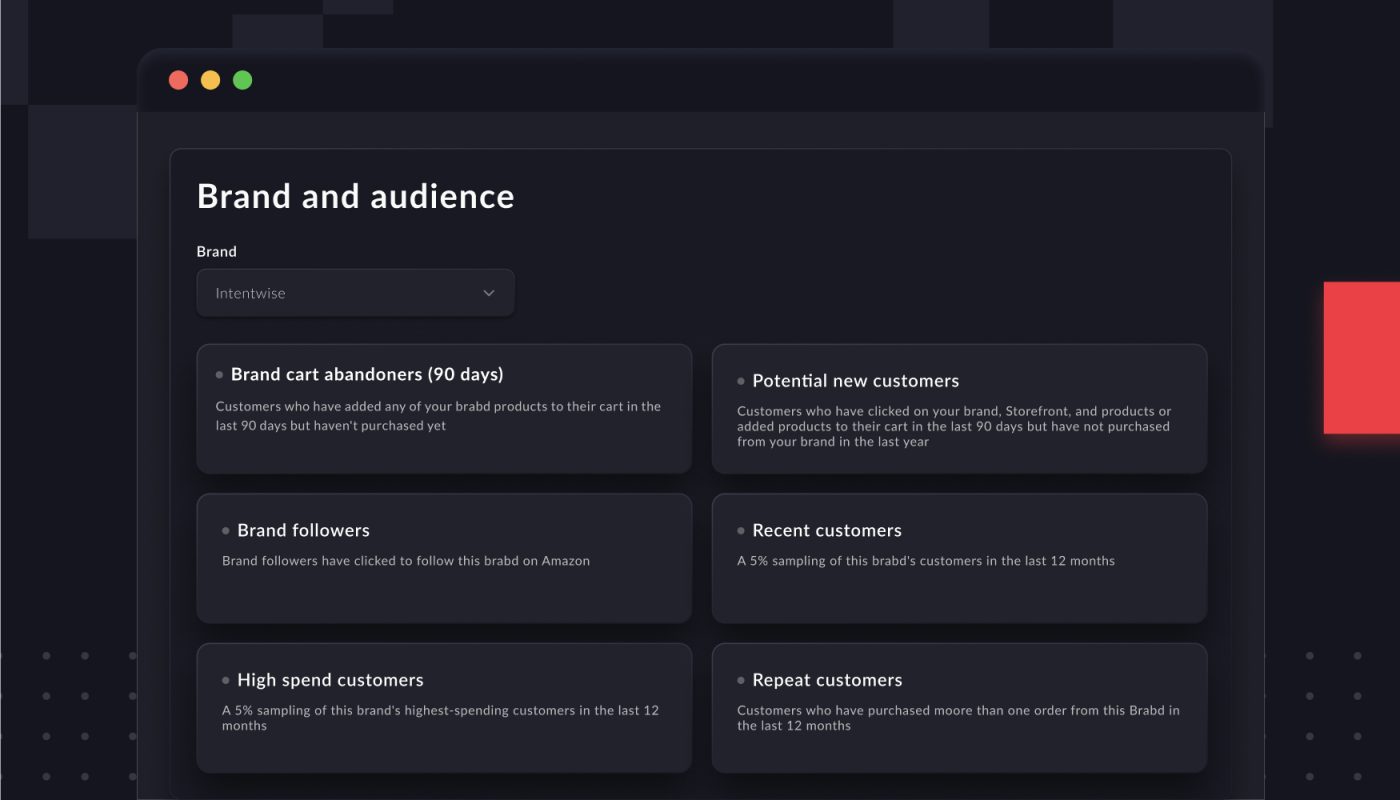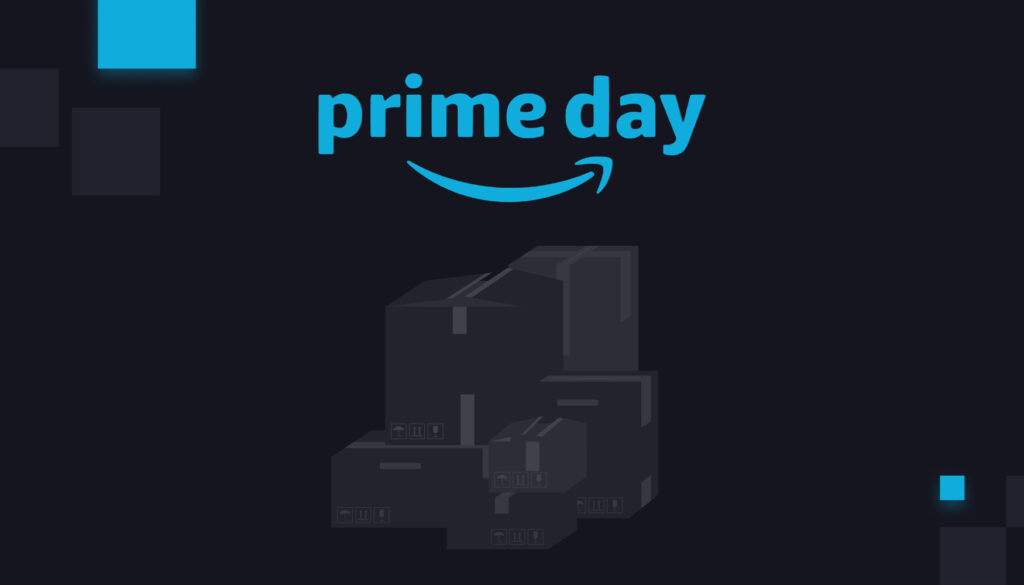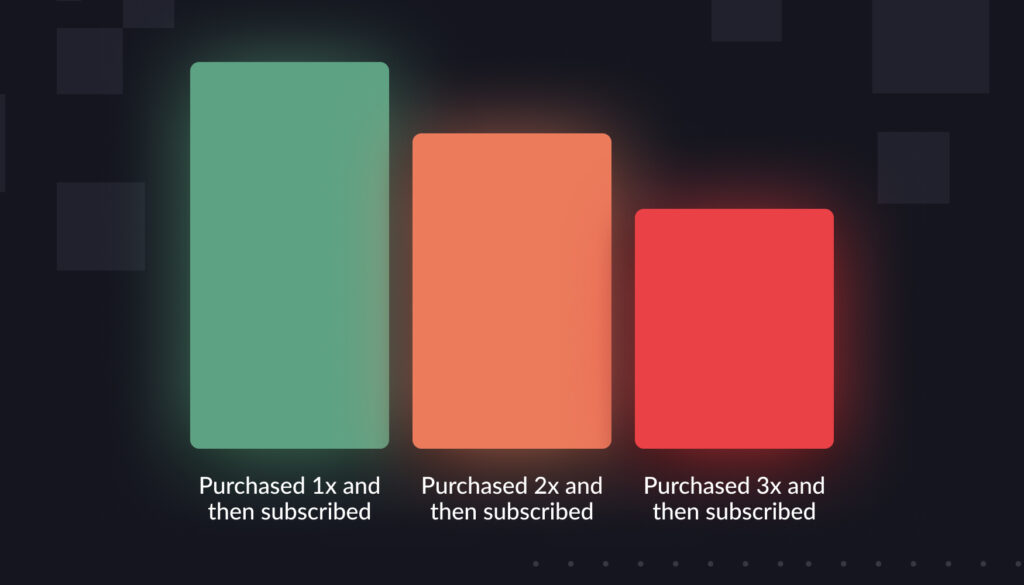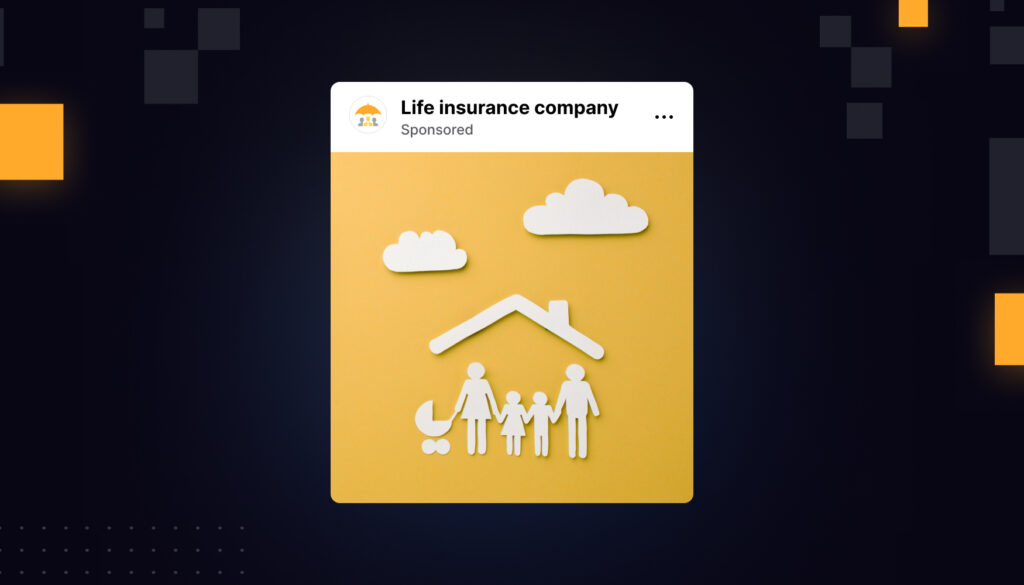The new Brand Tailored Promotions tool is about to change how discounting happens on Amazon.
Here’s why: With Brand Tailored Promotions, brands can create a wide range of segmented discounts for the first time.
Rather than creating coupons or deals that are available to anyone, you can reach only the groups of shoppers you most want to target.
Up until now, Amazon only allowed sellers to segment out discounts based on whether or not someone is an Amazon Prime, Family, Health, or Student member. But with this tool, you can target promotions to several key groups:
Cart abandoners
Repeat customers
Recent customers
High-spend customers
Potential new customers
Brand followers
The end result, ideally, is a whole lot of incremental sales. You can move the needle on multiple different groups of people who are already close to buying from you.
Brands and agencies that we spoke to told us that Brand Tailored Promotions seems to be one of Amazon’s most exciting new products in a while. “I think this is a game changer,” Joe Stefani, founder of Desert Cactus, told us.
What can you do with Brand Tailored Promotions?
Here are some ideas of what you can do with these new promotions:
Re-target cart abandoners with a discount. This is probably the clearest use case of any of the promotion opportunities. Now, you can target promotions to shoppers who added one of your brand’s products to their cart, but didn’t purchase, sometime in the last 90 days.
Sending discounts to cart abandoners is a staple of DTC marketing. The extra nudge is a way to close the sale. Now, you can do the same on Amazon.
“It’s a great opportunity that we did not have before to generate incremental sales on Amazon,” Liran Hirschkorn, founder and CEO of Incrementum Digital, told Intentwise. Without it, “a lot of these sales you would not have gotten.”
Cross-sell to high-spend customers: These are the shoppers who have spent more on your brand than 95% of your other customers over the last 12 months.
Because they a) have money to spend and b) have proven themselves fans of your brand, they are ripe for a cross-sell.
Add a small discount to all of your brand’s products for these customers, and you might see a downstream sales spike.
CPGs should go after recent or repeat customers. The usefulness of targeting recent customers depends a lot on what you sell. If you focus on consumables, then targeting promotions to recent or repeat customers is extremely valuable.
If you sell a big product that is infrequently re-purchased, like a bed frame? Probably not so much.
Test pricing strategies with Potential New Customers. Let’s say your product is a bit more expensive than some of your competitors. What if you wanted to understand to what extent your price is scaring away interested customers?
Using Amazon’s Potential New Customers audience, you can reach people who are already considering your brand. These are customers who clicked on your brand’s products in the last 90 days, but who haven’t bought from your brand in a year.
Running a discount that targets Potential New Customers can be a great way to figure out how much demand is impacted by your price.
For example, if the promotions that target Potential New Customers result in a sales spike, maybe you should consider lowering your overall price.
Which of these audiences are most effective?
The audience that proves most effective depends a lot on your brand.
A lot of agencies and brands are excited about the cart abandonment audience. But Joe Stefani, who has been testing Brand Tailored Promotions since mid-July, said he’s found that one audience seems to be redeeming these promotions at the highest rate: recent customers.
According to Stefani, recent customers have a roughly 3x higher percentage share of redemptions than the next most-engaged audience, repeat customers.
Are there any drawbacks to Brand Tailored Promotions?
Before you rush off to create Brand Tailored Promotions, we need to underscore a few important points.
Tailored Promotions do not displace existing coupons and deals. As Amazon noted in its FAQs, if you’re already running a coupon or a deal for everyone, Tailored Promotions may combine with those existing discounts (depending on the nature of the discounts).
That’s important to keep in mind.
When you run Brand Tailored Promotions, keep track of whether or not you have a coupon running on the product. If you do, your segmented audiences might be able to combine discounts. That could cut into your profit margins.
Tailored Promotions are only available at the brand level. Right now, when you turn on Brand Tailored Promotions, the promotions apply to your entire brand.
You can’t yet select to apply these promotions only at the ASIN-level—though Amazon says those capabilities are coming soon.
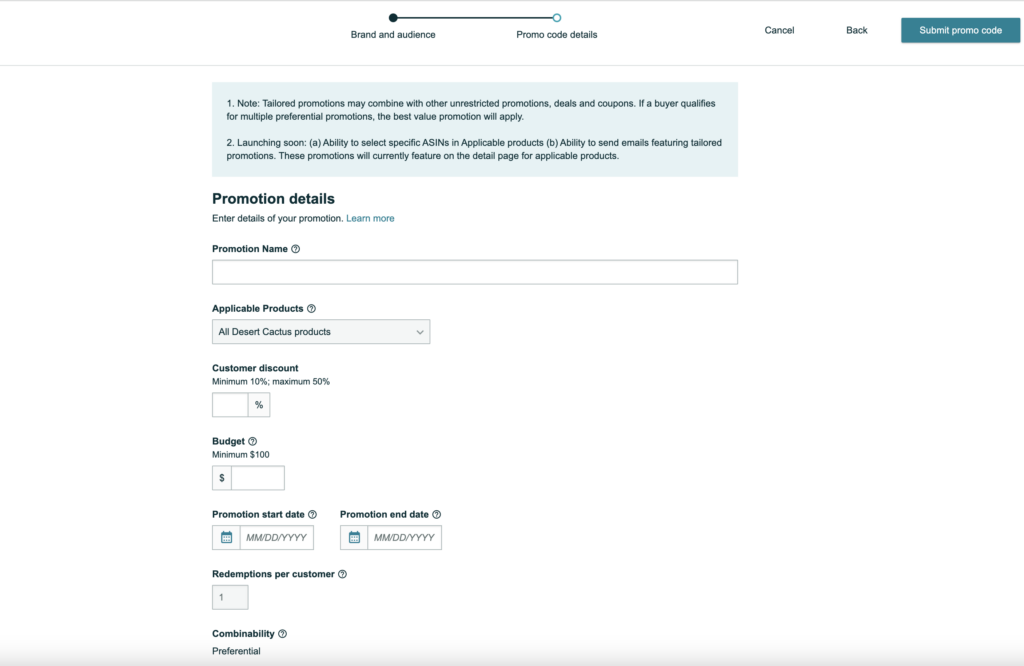
Tailored Promotions aren’t easy to find. The only downside of these targeted discounts is they can be hard for customers to find. A customer doesn’t receive a notification that they’re eligible for a discount.
Instead, customers have to discover these coupons organically in search, on a product detail page, or in the promotion shopping page. The Brand Tailored Promotions comes with a green badge that announces itself as a “Follower promo” or “Exclusive promo.”
That puts a slight damper on targeting some of these groups.
Let’s say someone abandoned cart on one of your products. Sure, you can now offer them a target discount. But for them to see it, they have to already be searching out your brand, or notice the item still in their cart.
Sponsored Products ads can also help move the needle here. They allow the coupon to be seen on the search results page.
One last takeaway: Expect your Brand Follower count to go up
We suspect that some of these new audiences are designed to influence customer behavior.
Take promotions targeted to the “brand followers” audience. With this audience, Amazon is probably trying to drive more attention to its Brand Stores.
As Brand Tailored Promotions gain in popularity, shoppers will soon begin to realize that, if they follow a brand’s store, they can be eligible for exclusive discounts. That will probably encourage more people to visit and follow your Brand Store page.
As that happens, prepare for an uptick in traffic to your Brand Store. That means using high-quality assets for your store is a must.
Want to know more about how to create a converting Brand Store? Luckily, our webinar this week discusses exactly that.

